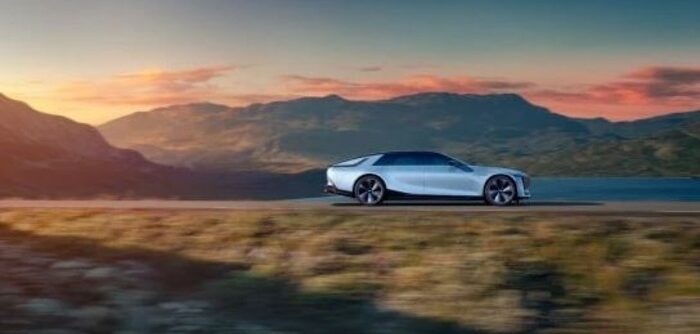The next-generation advanced driver assistance system Ultra Cruise from General Motors will have a 360° view of the vehicle provided by a suite of sensors when it launches on the Cadillac Celestiq. The system is designed to ultimately enable hands-free driving in 95% of driving scenarios.
The hands-free system will use a combination of cameras, short- and long-range radars, lidar behind the windshield, a brand-new computing system and a driver attention system to monitor the driver’s head position and/or eyes in relation to the road to help ensure driver attention. Working through “sensor fusion”, these systems will provide Ultra Cruise with a 360°, 3D representation of the vehicle’s surrounding environment.
“GM’s fundamental strategy for all ADAS features, including Ultra Cruise, is safely deploying these technologies,” said Jason Ditman, GM chief engineer, Ultra Cruise. “A deep knowledge of what Ultra Cruise is capable of, along with the detailed picture provided by its sensors, will help us understand when Ultra Cruise can be engaged and when to hand control back to the driver. We believe consistent, clear operation can help build drivers’ confidence in Ultra Cruise.”
As the solution progresses and various over-the-air updates are released, the OEM anticipates that customers will be able to travel hands-free using Ultra Cruise on nearly all paved public roads in the USA and Canada. GM has placed a focus on expanding the company’s ADAS accessibility, using a combination of the currently available Super Cruise driver assistance technology, and in the near future, Ultra Cruise.
The Ultra Cruise system includes:
A driver attention system consisting of a small camera, located on the top of the steering column, which uses infrared light to help monitor the driver’s head position and/or eyes in relation to the road to help ensure driver attention;
A compute platform: the physical hardware that enables Ultra Cruise. The system will be powered by a scalable compute architecture featuring system-on-chips developed by Qualcomm Technologies.
Long-range cameras: Seven, eight-megapixel cameras are located on the front, corners, back and sides of the vehicle. These enable the system to detect objects including traffic signs, traffic lights, other vehicles and pedestrians.
Short-range radars: Placed on the four corners of the vehicle, the radars sense a radius of up to 90m around the vehicle, spotting pedestrians crossing the street or vehicles in other lanes.
Long-range radars: Three 4D long-range radars on the front and back of the vehicle enable the use of Adaptive Cruise Control speeds as well as lane change maneuvers at highway speeds by helping to detect an object’s location, direction and elevation relative to the speed of the vehicle. They also help the system determine safe stopping distances.
Lidar: Located behind the windshield, lidar helps to produce an accurate 3D-view of the scene, enabling more precise detection of objects and road features such as vehicles and lane markings, even in poor weather conditions.


